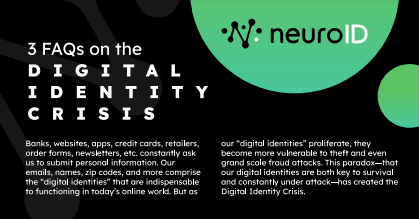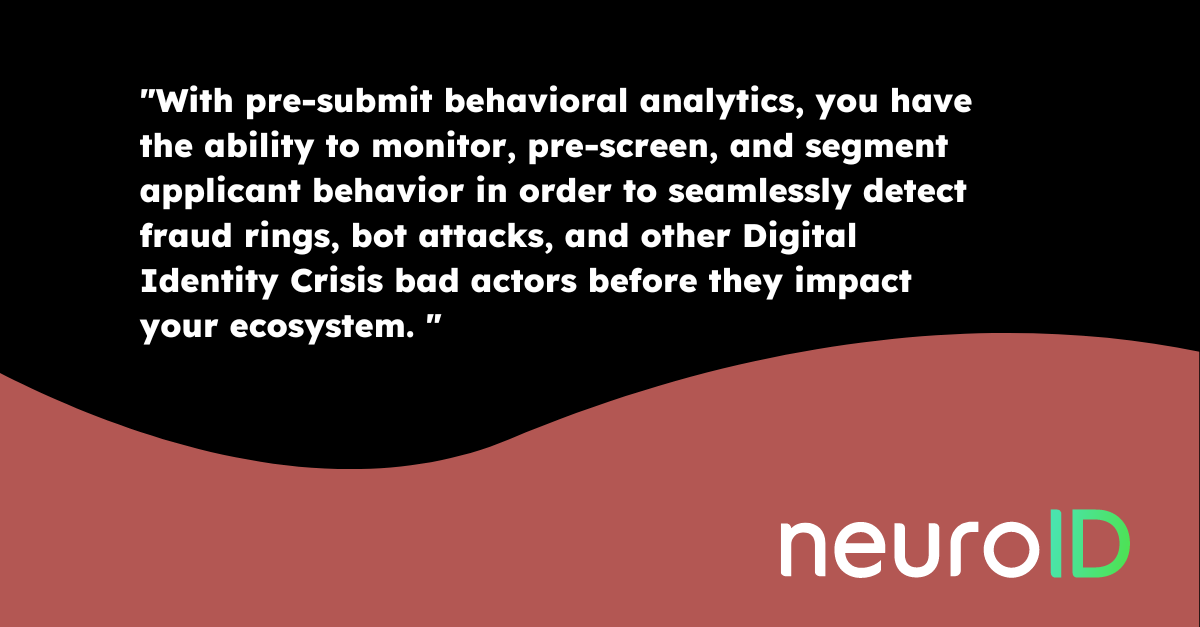
Your Face in Exchange For . . . 4 Returns for Your Digital Likeness – Learnings from Identity Week
Identity Week 2023 just concluded, and the unnamed theme was “how do we make digital identities easier in the U.S.?” Kenneth Gantt from the Office of Biometric Identity set this tone early on in the keynote by saying, “We’ve failed. We haven’t made the progress we hoped for.”
His direct language highlighted the fact that identity verification is an ongoing friction point between consumers and service providers. Multiple speakers noted that $43B was lost to ID theft and fraud in the U.S. in 2022. While biometrics is the frontrunner worldwide for linking the physical and digital self, 56% of North American and European consumers worry that biometrics increases identity fraud risks, and 45% do not want companies accessing their biometric data.
The road to balancing fraud prevention and consumer friction is steep. Still, one potential path added brightness to Mr. Gantt’s diagnosis of the state of digital identity verification: Make the tradeoff simple. Investments that take from consumers must make it clear what they give back. In exchange for requiring personal identifiers, which help reduce risk on the business by ensuring they’re servicing the right person, you must provide simple and meaningful additional value.
Data backs up the value of this strategy. 52% of consumers said they’re more likely to trust a company that “asks only for information relevant to its products or limits the amount of personal information requested”. This exchange isn’t about educating the consumer on all the reasons why having more information about who they are will give you (the service provider) more confidence. It has to be about the added value that they (the consumer) will receive for giving you more information. Make it simple.
Here are 4 examples of service providers, highlighted at Identity Week 2023, who are simplifying the exchange around digital identities and value.
The same level of security, made easier for consumers. Their face in exchange for . . .
1. Hands-free travel and shorter lines
Neal Latta, Assistant Administrator for the TSA, noted that one of the busiest airports in the world is not afraid to push the envelope in digital identity verification. In 2024, Singapore’s Changi Airport will provide automated, passport-free immigration clearance. While passports will be needed to enter other countries, passengers departing Singapore won’t have to repeatedly find and store their precious travel documents.
The exchange for consumers’ digital identity is a faster and less stressful travel experience.
2. Ticketless entry and bartender-less beer
The Los Angeles Football Club (LAFC) has been developing BMO Stadium with biometrics for the past six years. When asked what they wanted, their primarily millennial-customers “said they didn’t want to touch things, and they didn’t want to talk to people,” explained CTO Christian Lau while on stage. In response, LAFC set a goal of more efficient, contact-free service. They rolled out facial recognition with Ticketmaster and Clear to allow attendees’ faces’ to replace physical and digital tickets. Next is the full-scale rollout of biometrics for age verification to expedite alcohol purchases. They’ve piloted this at concerts using Florida startup TendedBar, which scans your face and driver’s license. Once your age is verified, it stores your information and lets you self-serve your drink. LAFC plans to integrate biometrics more holistically throughout their fans’ journey in the stadium. And it’s paying off. LAFC is the first billion-dollar Major League Soccer franchise, and they have sold out of every MLS regular season and playoff match.
The exchange for consumers’ digital identity is more time to watch the match or show they paid for and less time queueing outside or inside the stadium.
3. Rights for all likenesses of you
HAND (Human & Digital) Talent ID is the first global ID registry for digital likelinesses. Once registered, your virtual self can be booked for virtual jobs. Specifically targeted at the sports and performing arts industry, HAND proclaims “both is better” because, as their CEO Will Kreth noted on stage at Identity Week, “digital avatars make real money in the real world.” Their use cases go beyond celebrities performing in two places at once; Kreth shared the example of sign language interpreters who have spent years honing their craft and amassing followings for their expert style. The demand for interpreters is high and the supply is low. With HAND, the interpreters’ high-quality expertise can be supplied to more locations.
The exchange for a full rendering of a digital likeness in this case is additional work opportunities and protection against unauthorized deep fakes (all the more relevant after Tom Hank’s recent deep-fake dental ads).
4. Jobs, phones, and healthcare
Progress in digital identities profoundly impacts access and mobility for rural residents, poor people, women, children, and vulnerable groups in Africa and Asia. Julia Clark, senior economist for the Identification for Development Initiative (ID4D) at the World Bank, reported that 850M people worldwide lack a foundational identity (that is, any kind of legal ID whose primary purpose is recognizing legal identity and government-recognized credentials). Among low-income country residents, the World Bank found 46% say their barrier to a documented identity is due to a lack of documentary requirements, 44% say it’s because of the distance to registration points, and 40% say it’s because of the prohibitive costs in attaining one. A lack of identity can mean no job, phone, or health care. Without confidence that you are who you say you are, employers, service providers, and governments can’t quickly provide support to help individuals rise out of poverty—especially with the tremendous increase in identity theft and fraud since the pandemic.
But progress in the private sector is helping. While biometric identifiers pose privacy concerns, given their risk if compromised, they’re also a powerful substitute for physical identity documents that can be lost. Figuring out how to safely and thoughtfully collect and use biometric data for digital identity verification is a must. It’s helping form critical digital identity infrastructure across the developing world.
The exchange for a person’s digital identity is a protective infrastructure that increases financial access for all.
NeuroID isn’t an identity verification or authentication provider. So why do we care so much about the growth of digital identities? While we don’t provide identity verification services, we know investments for seamless and secure identity verification are expensive and difficult to implement without added layers of confidence. We offer service providers more confidence in who they’re transacting with by quickly and invisibly scanning their users’ intentions, based on their in-form behavior, to see if they’re a bot, fraudster, or genuine human. We care about the identity landscape because the field is still fragmented, which makes it expensive to get a full picture of a human. So, low-cost, low-friction tools are essential to ensure the cost to verify consumers stays low. Additionally, the world of digital identity is starting to evolve quickly in the U.S—the international laggard—and businesses need to readily accept and understand the modern identity and fraud tools that can help launch them into the future.




